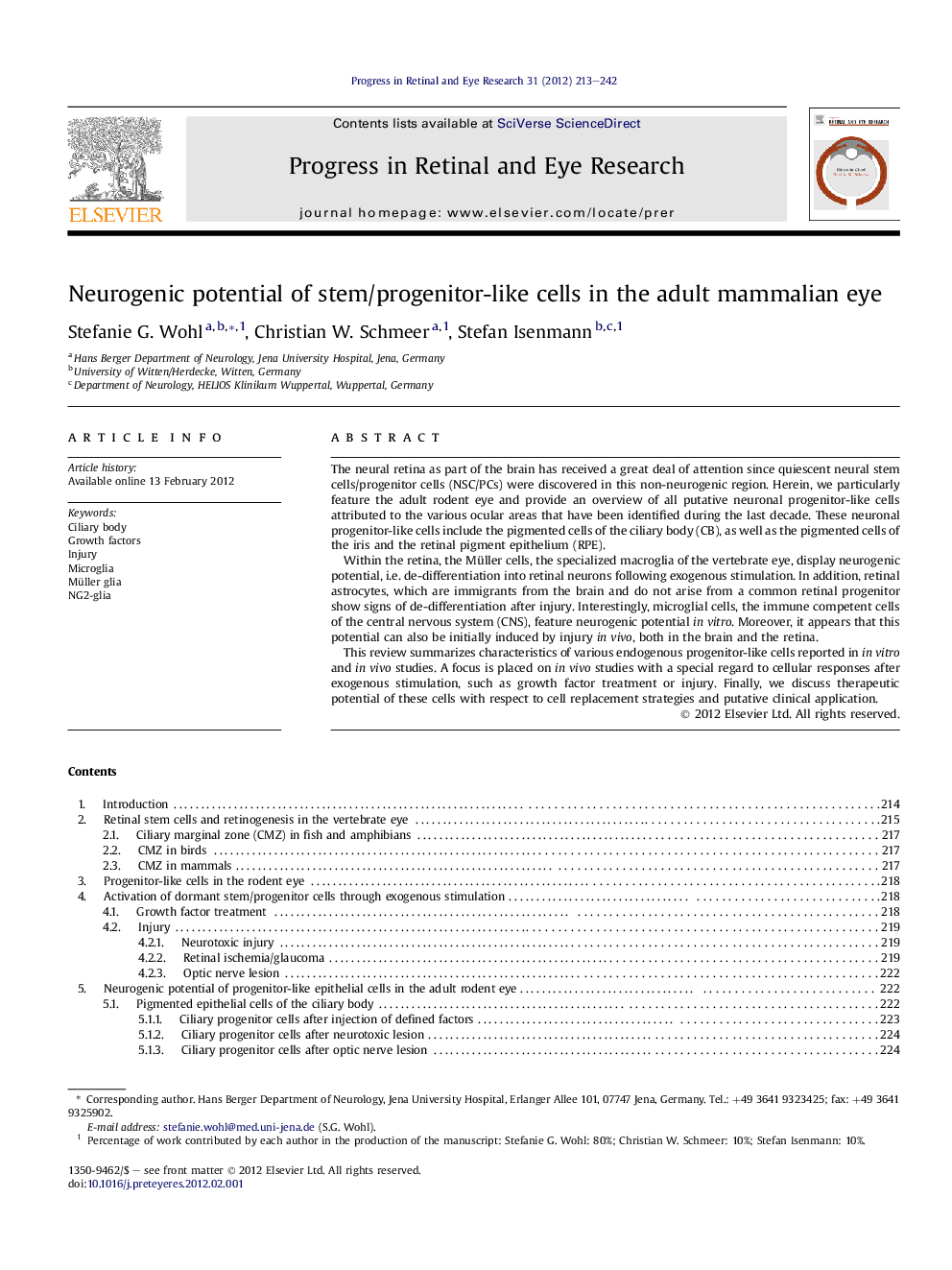| Article ID | Journal | Published Year | Pages | File Type |
|---|---|---|---|---|
| 6202777 | Progress in Retinal and Eye Research | 2012 | 30 Pages |
The neural retina as part of the brain has received a great deal of attention since quiescent neural stem cells/progenitor cells (NSC/PCs) were discovered in this non-neurogenic region. Herein, we particularly feature the adult rodent eye and provide an overview of all putative neuronal progenitor-like cells attributed to the various ocular areas that have been identified during the last decade. These neuronal progenitor-like cells include the pigmented cells of the ciliary body (CB), as well as the pigmented cells of the iris and the retinal pigment epithelium (RPE).Within the retina, the Müller cells, the specialized macroglia of the vertebrate eye, display neurogenic potential, i.e. de-differentiation into retinal neurons following exogenous stimulation. In addition, retinal astrocytes, which are immigrants from the brain and do not arise from a common retinal progenitor show signs of de-differentiation after injury. Interestingly, microglial cells, the immune competent cells of the central nervous system (CNS), feature neurogenic potential in vitro. Moreover, it appears that this potential can also be initially induced by injury in vivo, both in the brain and the retina.This review summarizes characteristics of various endogenous progenitor-like cells reported in in vitro and in vivo studies. A focus is placed on in vivo studies with a special regard to cellular responses after exogenous stimulation, such as growth factor treatment or injury. Finally, we discuss therapeutic potential of these cells with respect to cell replacement strategies and putative clinical application.
